Here’s a fun science experiment that will definitely get a “wow” from the kids. Combine baking soda and vinegar to make sodium acetate, or hot ice! It crystalizes instantly when you pour it, allowing you to create a tower of crystals. Since the process of crystallization is exothermic, the “ice” that forms will be hot to the touch. Science is so cool!
Making hot ice is a simple process, and you probably have everything you need on hand. You’ll need a couple of hours, though, so keep that in mind.
Step 1: Combine 4 cups of vinegar and 4 tablespoons of baking soda in a pot. Before we did this experiment, I read instructions for hot ice on a few different websites. I decided to use the amounts given on Playdough to Plato. Add the baking soda a little at a time so that when it fizzes it won’t overflow over the edges of your pot!
Janie and Jonathan were quite impressed with this step.
Step 2: You have now made sodium acetate! (As well as carbon dioxide – it was given off in the reaction, which created all that fizzing.) You’ll need to boil the solution, though, to reduce the amount of water so that it is concentrated enough to form crystals.
Cook your solution over low to medium heat for about an hour. You want to reduce it down to 1 cup or less.
Now, the stuff I read online said that crystals would start to form around the edge of the pan. This is important because you’ll need a few crystals as “seeds” to start the crystallization process. Well, our solution never formed crystals while it was cooking. When it was down to 3/4 cup, I finally stopped boiling it.
Step 3: Pour your sodium acetate into a glass container and put it in the refrigerator for 30 to 45 minutes.
We did this, and while it was in the refrigerator, I scraped some of the dried solution off the sides of the pot, hoping that it would work as the crystals needed to start the reaction.
It didn’t work. Boo. We poured the solution over the pan scrapings, and nothing happened.
We tried putting it in the refrigerator for awhile longer. Still nothing.
But, this experiment is very forgiving! I left the solution on the counter and came back to it the next day. I decided to boil it a little more – maybe it wasn’t concentrated enough. And we had never seen any crystals form in the pan. After about 10 more minutes of boiling, there still weren’t any crystals on the edges of the pan, but I decided that the solution was reduced down so far that we just had to stop.
As soon as I poured the solution out of the pan and into a glass jar, the remaining liquid in the bottom of the pan crystallized instantly! So I knew we were getting somewhere!
This time, I put the solution in the freezer for about 20 minutes. Much faster.
Step 4: Pour the cooled solution onto a few crystals that you scraped from the pan.
I scraped off some crystals from the bottom of the pan and put them in a plastic tray.
Then Aidan poured the solution very slowly onto the crystals.
The first little bit took a few seconds to crystallize… but it DID!
He kept pouring, a little at a time…
If you pour too quickly, the crystals will spread out horizontally. So we went nice and slow.
It was so fun to watch! By the end, Aidan was pouring just a drop at a time, and we could actually watch each drop piling up on top of the tower of hot ice.
We didn’t get a chance to measure our final tower, but it was impressive!
Why does this work?
The sodium acetate solution contains water. We reduced the amount of water in the solution by boiling it, but there is still water in there. The water molecules keep the sodium acetate from forming crystals. Well, crystals may start to form, but as a few molecules join together, the water molecules pull them apart again.
When we cooled the solution, we were able to bring the sodium acetate down to a temperature lower than the point at which it would normally become a solid. This word for this is supercooled.
By the way, we think of melting and freezing points mainly in reference to water, but all substances have a melting/freezing point. For example, copper remains a solid until it reaches 1,984 degrees Fahrenheit!
Back to the sodium acetate… The crystals in the tray provided a starting point for crystals to grow in the solution, called a nucleation site. This gave the sodium acetate the push it needed to crystallize!
The directions on Instructables said to filter the solution to get rid of any impurities that might inhibit the crystallization process. We didn’t do that step, and it turned out fine.
The crystallization process gives off heat, so the hot ice is hot to the touch! Not hot enough to burn, though. We all had fun touching it!
Our tower was pretty flimsy and broke quickly, but we had a great time with this science experiment. If you want to repeat the process, you can melt the crystals down into a liquid again, cool it again, and make another tower!
Also, I was a little worried about our pot, but it was super easy to clean. The sodium acetate dissolves easily and rinses right off.
Have fun with science!


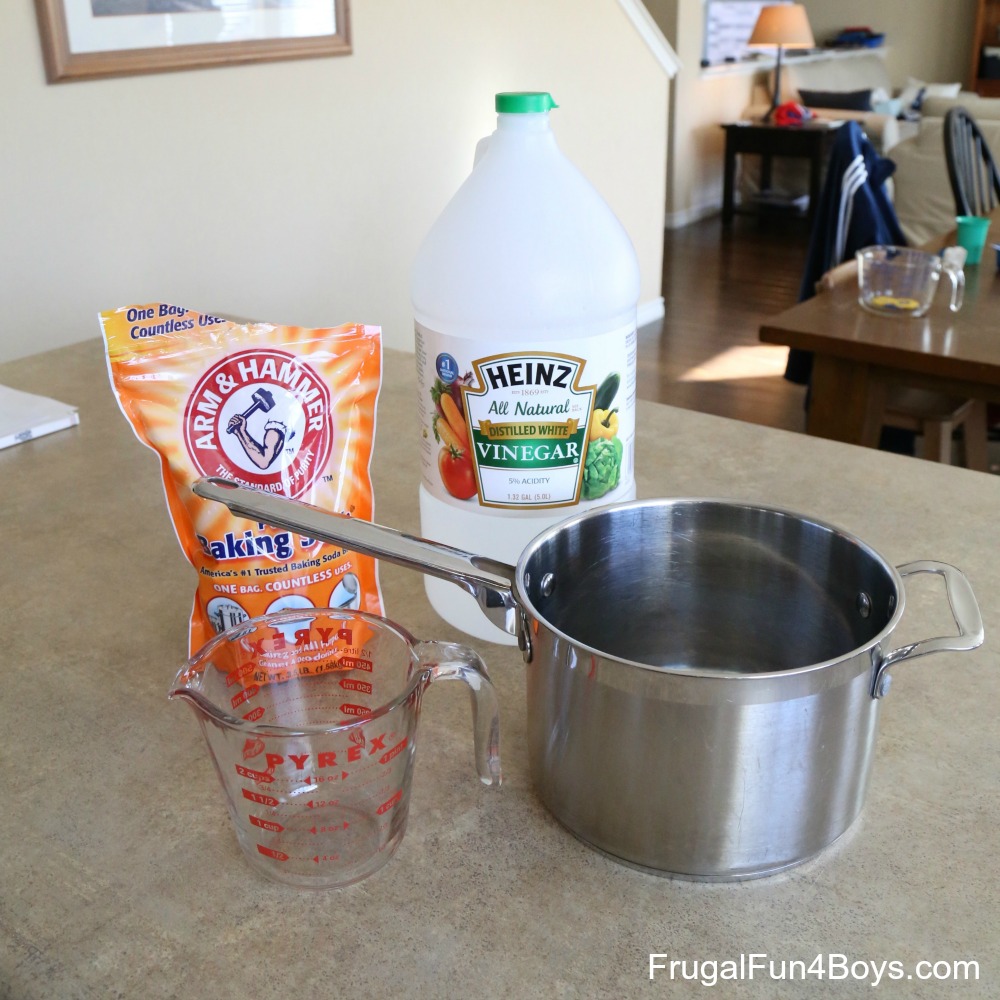

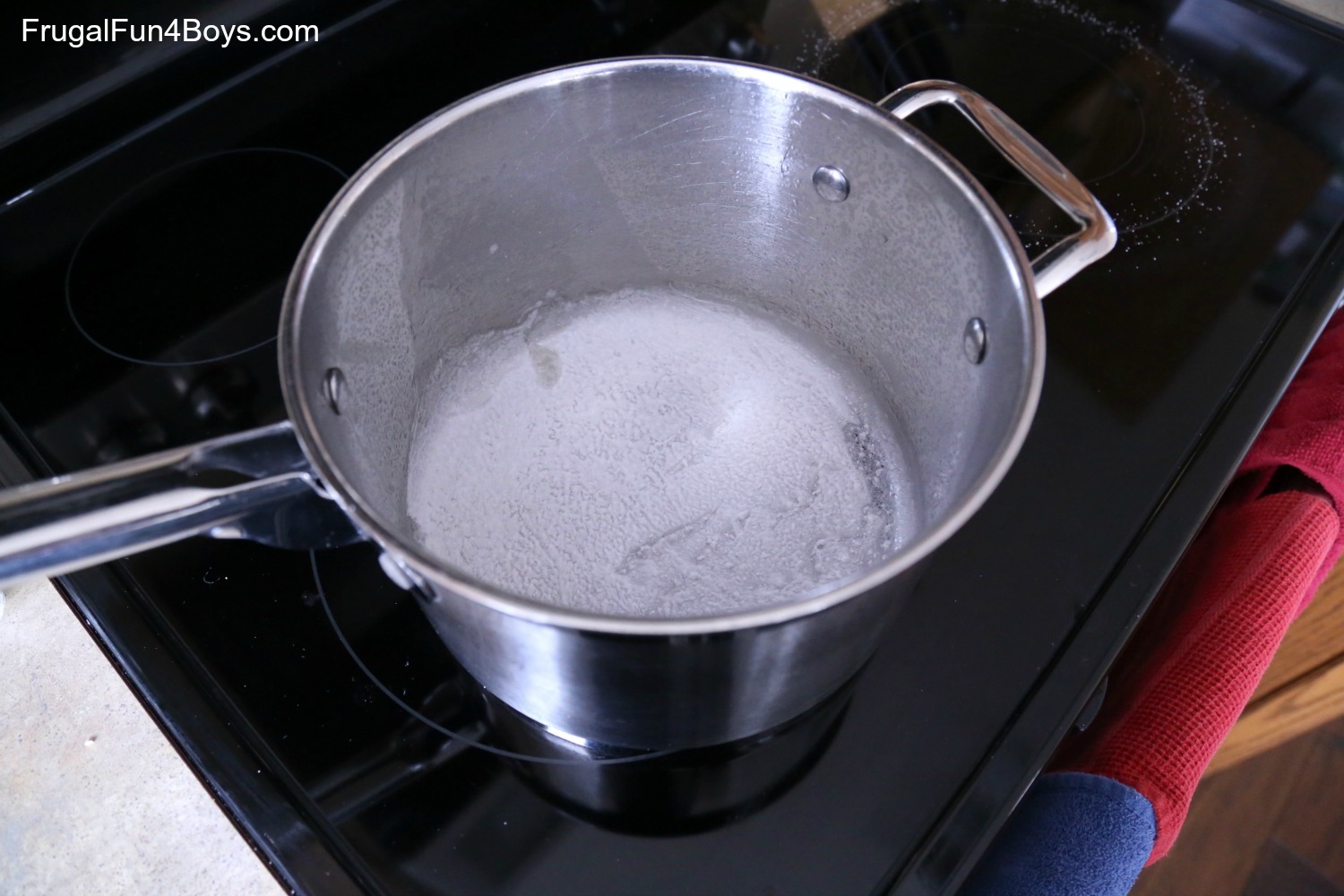
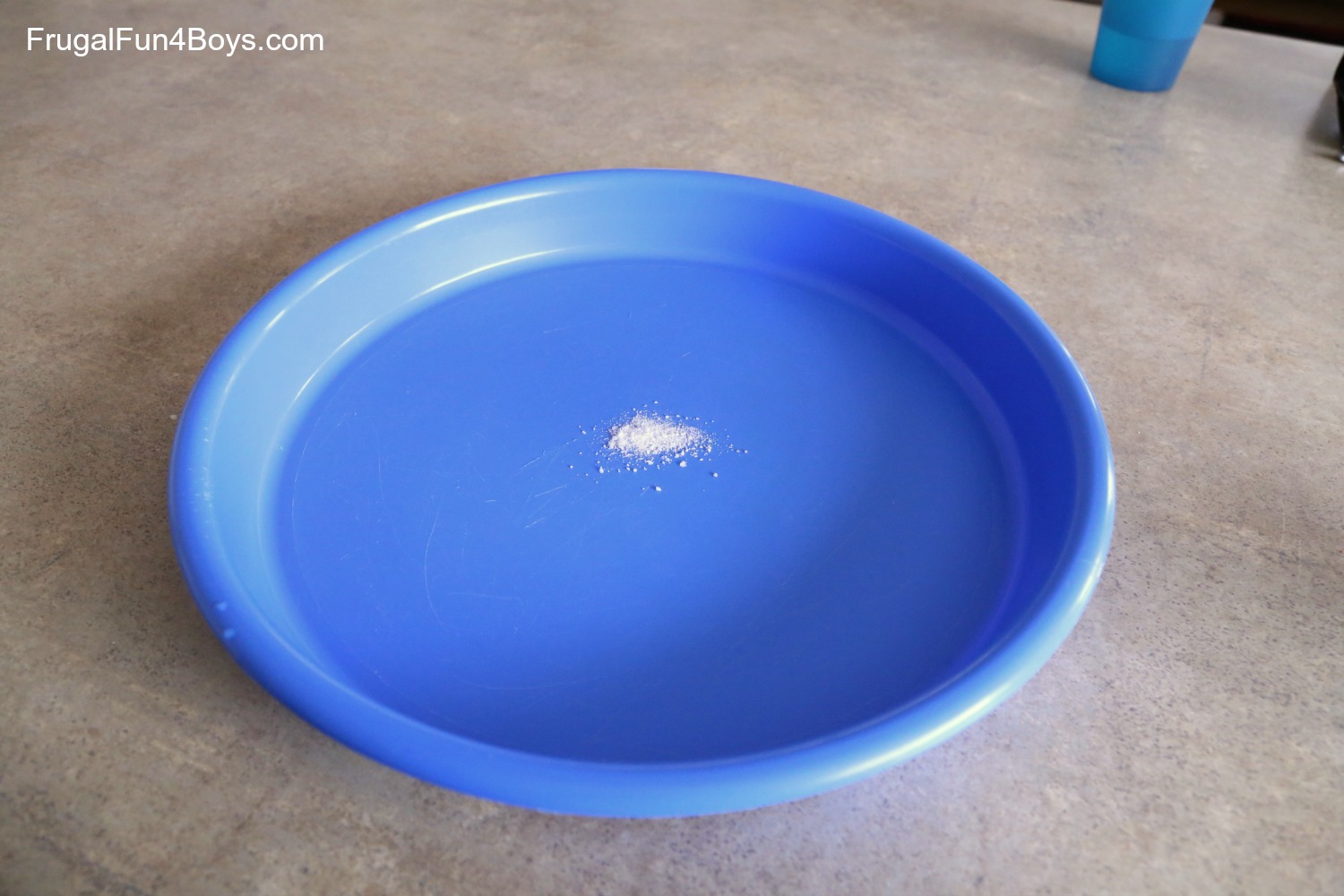
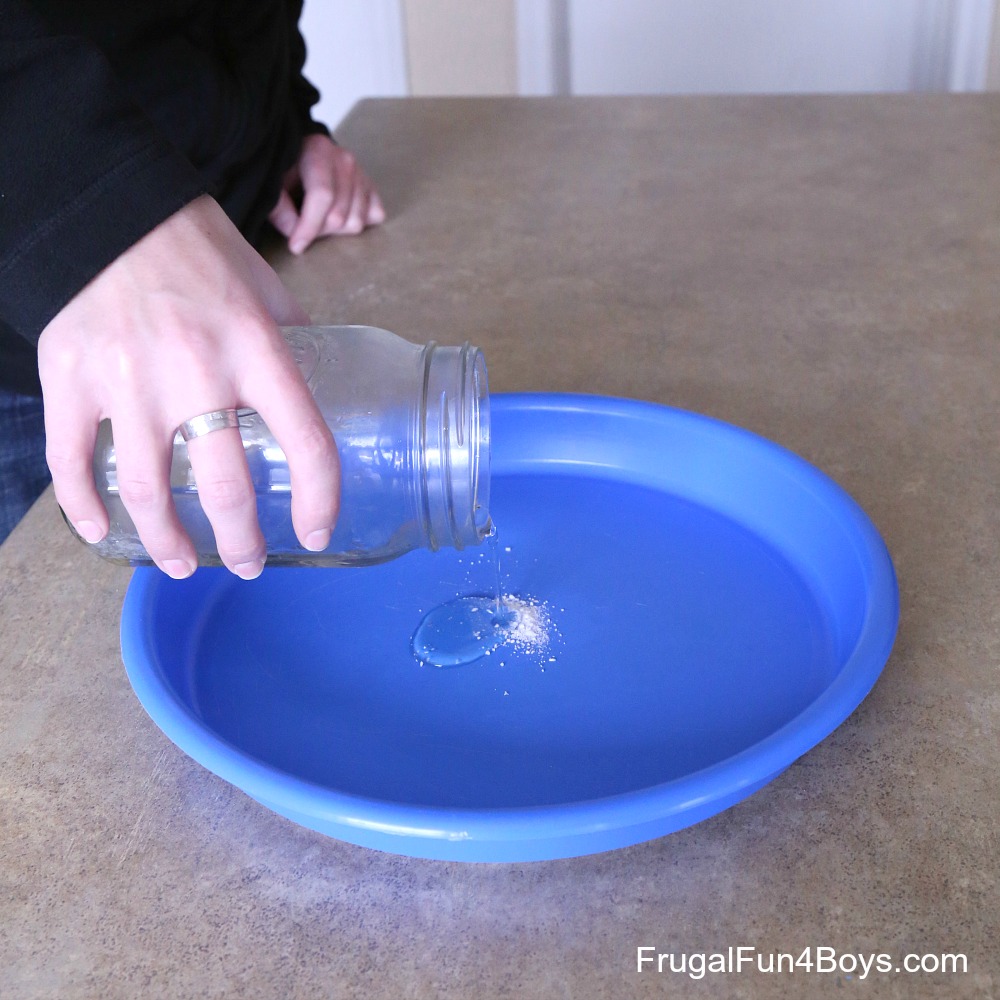

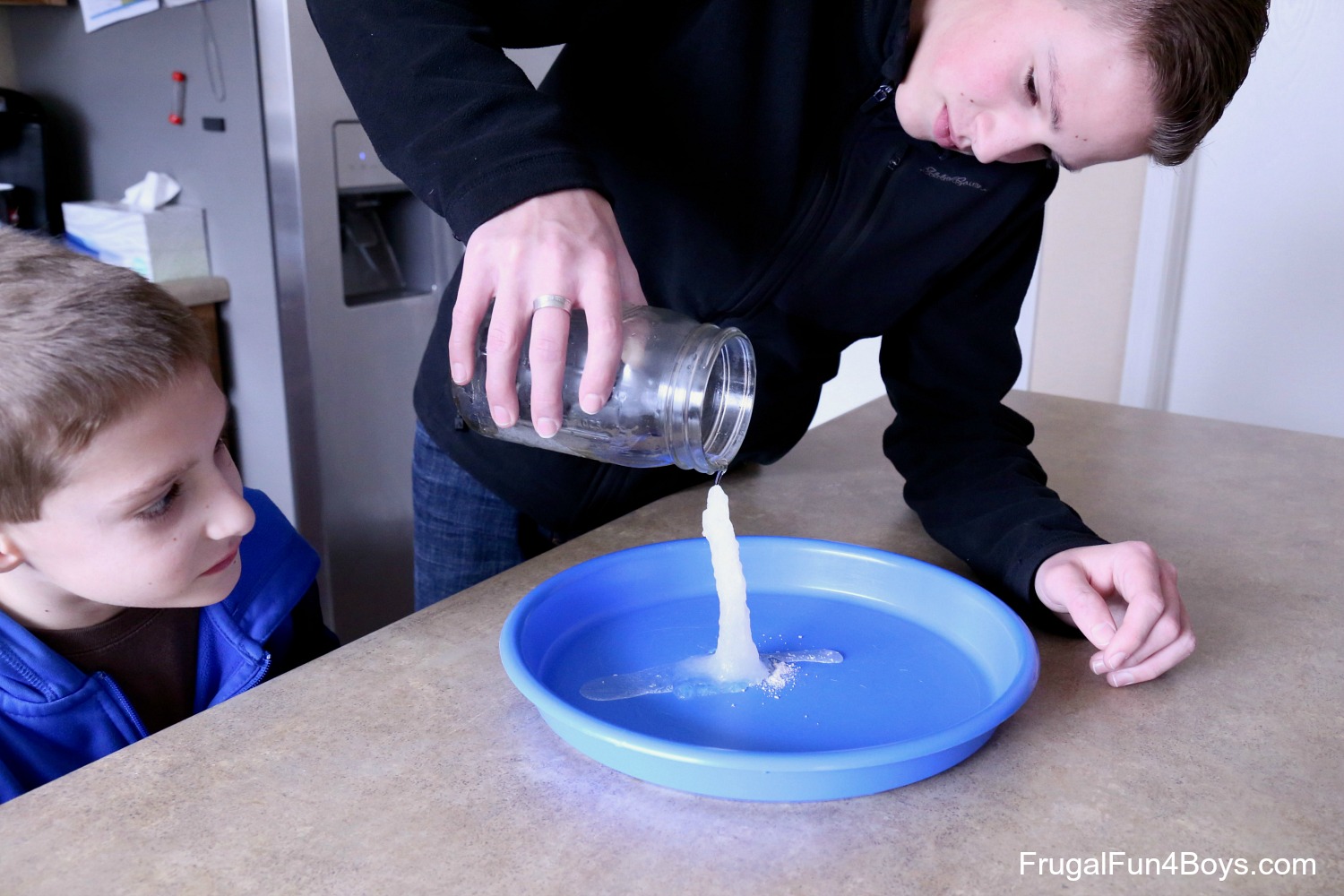
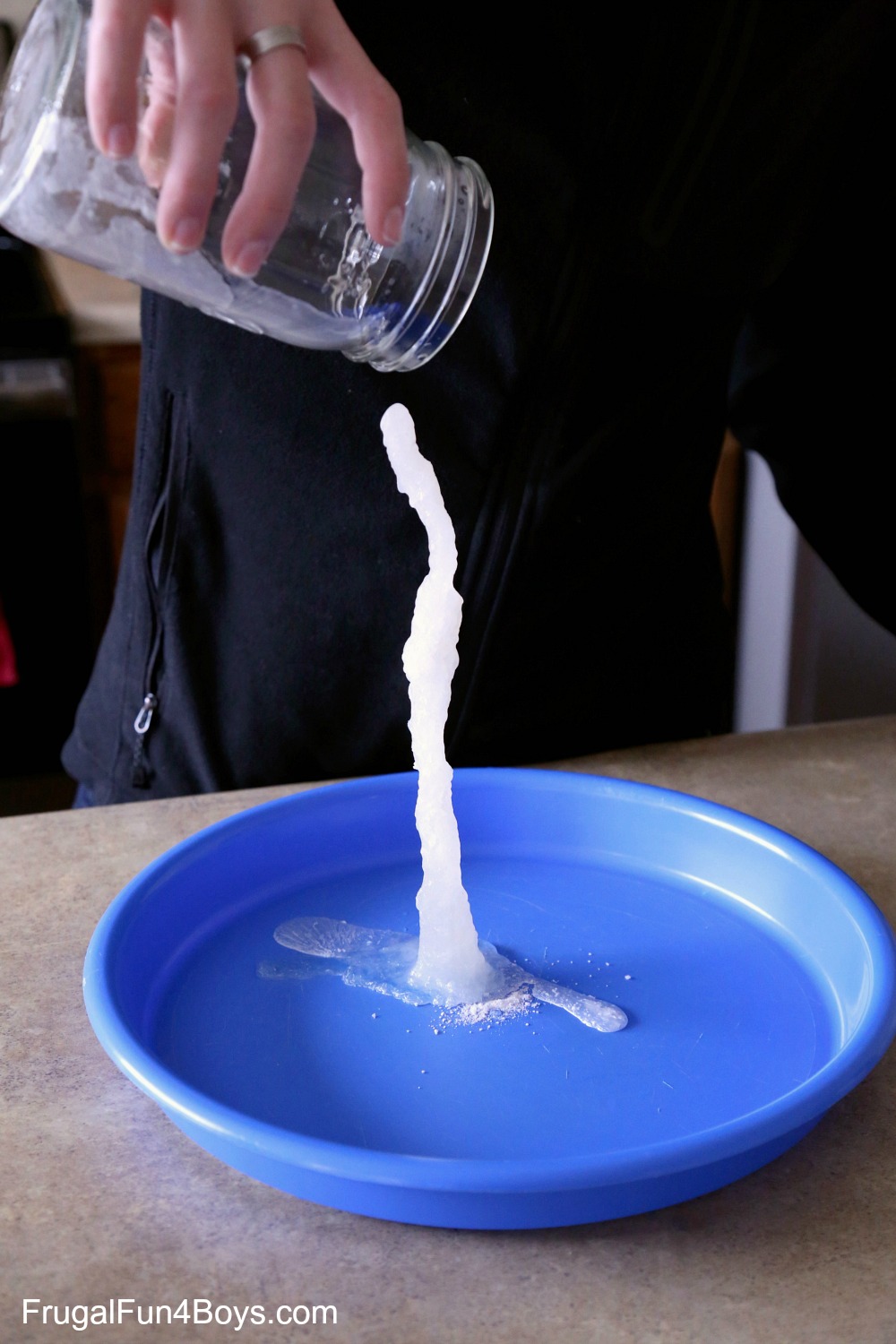
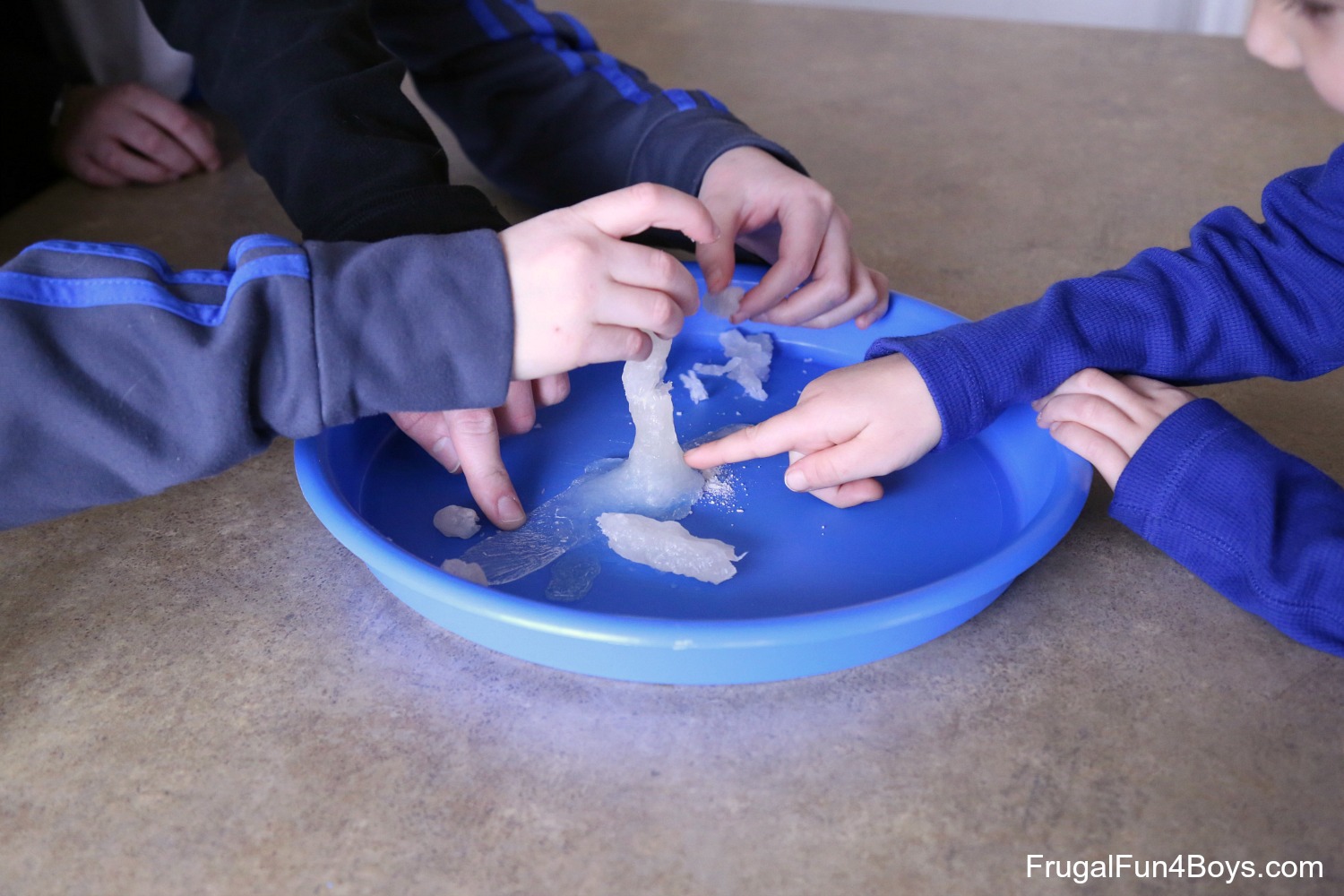

23 Comments
Anne-Line Feb 1, 2018
How strong (%) was your vinegar?
william Oct 30, 2018
this is so cool i wated to try sence i was 5
islam Feb 7, 2018
what is he adding on it water or vinegar ?
Sarah Feb 7, 2018
He is pouring sodium acetate, which we made by combining baking soda and vinegar. We boiled it down to make it more concentrated.
Bobbie Feb 7, 2018
I absolutely loved science & chemistry in school & this experiment is one I've never seen. I enjoyed your post so much that I thoroughly read the entire thing (I'll admit I skim through a lot of other sites posts) & am super excited to try this with my grandkids. Thank-you for detailing everything, even the difficulties. I feel very confident going into this experiment. And since I just found your site I look forward to perusing the rest of your site.
Mohamed Borhami Feb 8, 2018
Hi Sara , you are amazing , wonderfull , i have a chemistry graduate , but you can simplify science to kids its perfect i 'm following your site ,and pass what you did to my grandson , my daughter follow the homeschooling with the kids and i know how the effort and responsibility , but she was happy as she add one day a week for free activities, go on and good luck .
Marlene Manning Feb 9, 2018
Hi Sara,
I am a science relief teacher from Australia and was wondering if you can make the solution at home, carry it to school in a cooler bag, pop it in the fridge at school to use with different classes?
Sarah Feb 11, 2018
Hmmm, now that's a good question! You can definitely make the solution ahead of time. What I don't know is whether you would need to heat it at school for a few minutes, then cool it to get it to the supercooled state. You might want to test it out first!
Shana Fordahl Mar 20, 2018
I want to try this with my STEAM club at school but I too would need to cool it at home and bring it later. Did you try it. Did it work?
SuperDan Sep 7, 2018
You'll have to refreeze in. If that doesn't work, Reboil it back onto liquid, 5hen refreeze. That should do it.
Linda Feb 2, 2021
Heat it at(before) school and let it come to room temperature. It will work that way. A microwave or hotplate will work to heat it.
Lorraine Feb 19, 2018
Thank you for sharing! I plan to make this with my grandson today, would you happen to know if any type of vinegar can be used? Seems all I have on hand is red wine vinegar ?
Linda Feb 2, 2021
It is all 5 percent acetic acid.
Amanda Feb 24, 2018
Ahhh, what do I keep doing wrong? We have had 3 goes at this and the coolest thing I can do is make it freeze in the bowl as soon as I "disturb" it. Which is actually quite cool and my boys love it but we can't get it to the state of being able to pour it and watch it freeze!
Linda Feb 2, 2021
Add a little more water if it does this and it should become a solution. You may have to heat it a little.
Pamela Apr 21, 2018
This was so awesome, I love watching kids get involved in things like this, great kids and I love seeing parents that are spending time with there kids to teach them things like this.
Keep learning kids science is so awesome. This was very impressive.
Thanks, Pamela
Carolyn Apr 26, 2018
Thanks for sharing this and the science behind it! It really helped explain the process. My 5th grader would like to try to do the boil-ahead idea and bring it to school after - I'd also love to hear if that worked for anyone. :)
By the way, I've assumed that this is the same process as what's in those "heat packs" sold for health needs and such - but they activate with a click of a metal disk. Any idea what that disk is??
Kelly Jun 12, 2018
It took me 5 attempts to get this right but once I did, WOW! It is so exciting to see those crystals form :)
Sam Mar 16, 2020
Hi Kelly, I’m trying to get this to work, but each batch I make fails. What did you change to make yours work? Thx Sam
Hena Jose Jun 29, 2018
Really good one. well explained. surely will try
Lisa Jul 18, 2018
I wasn't able to get this to work. Our solution turned slightly brownish as it simmered and we were not able to get it to freeze to the crystals we got off the bottom of the pan.
Should the solution be cool when you pour it?, cold? slightly warm?.....
We are trying again!
Looks so cool...my boys are excited to see if we can get it to work this time.
Tara Aug 7, 2018
Did the vinegar and baking soda dissolve together? We tried it and it was a bunch of mush and didn't even pour. Are we supposed to stir as it cooks?
Jo Sep 21, 2018
My son is doing this for school so do you think you can leave the liquid overnight?
Sarah Sep 24, 2018
Yes, but... he may need to heat the liquid again and then cool it rapidly in order to get the crystals to form. The supercooled state of the liquid seems to be important for forming the crystals. I would definitely test it first before taking it to school!
gdgkufgdiyv Nov 12, 2018
good
Barb Jan 24, 2019
Very interesting! I am wondering how much of the 'crystals' that recipe of 4 cups/4tbsp made? Approximately? I'm hoping to use it in the 'still solution state' for the making of a mordant for fabric (long story)
Crystal Apr 26, 2020
My
Boys and I tried this today. We had to boil a second time to get
Crystals. After cooling the liquid when we went to pour crystals formed instantly in the jar, then all of
The solution crystallized before we could add it to the plate! Still cool!
Mariska Bishop May 6, 2020
This experiment is cool
Meredith Wagoner Jul 7, 2020
This one didn't work for us. The solution turned into a sludgy consistency when we put it into the fridge. Any idea where we might have gone wrong? I'd love to try it again. And thank you for including your process- super helpful!
Elliot Driver Dec 7, 2020
I am making this for class can i cool it and un cool it to bring it to school or does it need to stay cooled .
Tammie Niffenegger Feb 21, 2021
You are making a supersaturated solution. The water is holding more sodium acetate than normal. This is because the solution was made at a high temperature which holds holds alot of sodium acetate, but when cooled the molecules slow and cannot hold the sodium acetate. So ANY disturbance will cause it to crystallize. When you heat it back up you are redissolving it.
This is the same reaction as whats in the REUSABLE clear handwarmers that you boil to used again.
Kiki Apr 27, 2021
What happens if there are no crystals at the bottom of the pan?
LaVerne Apr 3, 2022
My grandson found this experiment on tou tube but it lack the depth of instruction and we did not get the required outcome. I told my grandson I think it has to be hot and after reading your post we realized the video skipped the boiling processed. It went drom disaolving the baking soda to pouring it in the glass and wait for the crystallization to happen. Thank goodness we didn't throw the concoction away so we can see if it still works
Post a Comment